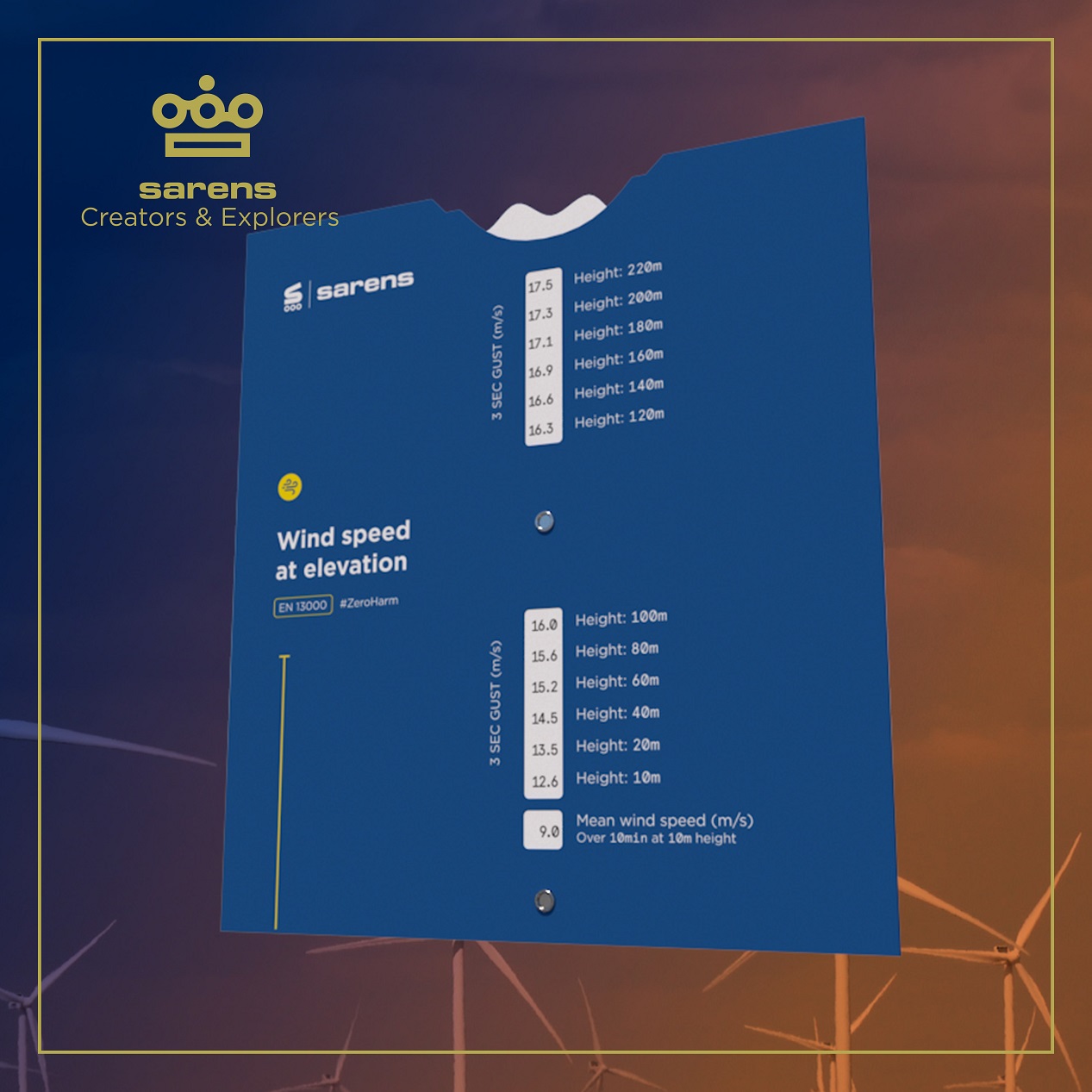
At Sarens, we work with giant cranes at great elevations, lifting massive loads that would otherwise have been impossible to lift. To do so, we rely on precision engineering and perfectly-honed heavy lifting expertise, both mastered over the course of our long and proud history in the industry.
But there is one powerful element that will always be beyond our realm of control, and which can mean the difference between a successful operation and a tragic disaster. And it is one of nature’s mightiest forces: the wind.
Although we cannot control powerful winds on our worksites, we respect the delicate partnership we have with this natural force: we know when wind speeds indicate a project can progress, and when they call for it to cease altogether. To operate safely in windy conditions, we have long depended on a number of forecasting tools, including mobile weather apps, internet forecasts, and contracted weather forecasting services.
But these tools are not perfect. In fact, they serve only as a starting point for determining whether a project can proceed safely or not. That is because they forecast the weather based on computer modelling at a 10-metre elevation. But at Sarens, we work at elevations several hundred metres high—and wind speeds are far more intense at those levels than they are on the ground. For this, we need to make further calculations based on the EN 13000 formula.
Getting accurate wind forecasts, every time
Measuring wind speed at elevation can be challenging, especially with changing weather conditions, differing boom heights, and tight project deadlines on-site. But when Sarens noted a slight uptick in near-miss occurrences in 2020, we knew it was time to apply our ingenuity to ensure operators on the ground could make accurate wind forecasts every time, no matter the conditions.
To that end, Sarens collaborated across departments to create an innovative in-house safety tool to help operators make the wisest possible decision in all weather conditions. The Wind Speed at Elevation Tool, or the Sarens Wind Disc, was produced at Sarens Headquarters and is now in use across the globe.
This easy-to-use and durable handheld tool ensures that operators never have to second-guess whether it is safe to proceed with a lift. With it, Sarens personnel on the ground can quickly calculate wind speeds at any given boom height, using data from mobile weather services and internet forecasts as a starting point for making the most accurate calculations.
Reliable forecasts at every elevation
The Sarens Wind Disc consists of two components: a blue outer sleeve listing boom heights from 10 to 220 metres, and a white internal disc listing wind speed in metres per second. The Wind Disc uses the EN 13000 formula to convert wind gust calculations provided by weather services into an accurate forecast based on actual boom tip height, with no room for error.
Sarens operators use the mean wind speed provided by weather forecasting services as a starting point, checking at least two different sources and using the faster of the two wind speeds for all subsequent calculations. They then input that wind speed into the Sarens Wind Disc tool, turning the internal white disc so the speed is listed in the lower window.
This provides the corresponding wind speeds for all possible boom tip heights. When the mean wind speed at ground level is 10 metres per second, for example, the Wind Disc shows it as 19.4 metres per second at a height of 220 metres.
The results from the Sarens Wind Disc are always compared to the wind speed limits listed in the crane operation manual. The operator can then make an informed decision on how to proceed with lift operations, booming up, or booming down. If in doubt, he or she applies Sarens’ signature ‘Stop and Consult’ procedure to make the safest possible decision no matter the situation.
Field-ready design and implementation
Not only does the Sarens Wind Disc make it simpler for field personnel to get accurate wind measurements, it is also designed for the realities of regular use in all weather conditions. For example, the tool is made from materials designed to withstand the elements, including heavy rain.
In rolling out the Sarens Wind Disc worldwide, Sarens created a brief video demonstrating how to use the disc correctly. Management personnel across the world also provided local training on how to use this new tool.
Today, the Sarens Wind Disc is helping operators and field personnel make wiser decisions that lead to safer working conditions on site. Sarens is proud of the exceptional teamwork displayed by the Rental Operations, MarCom and SHEQ departments, who poured their energy and expertise into creating a truly useful tool that is now creating safer working environments for our personnel across the globe.